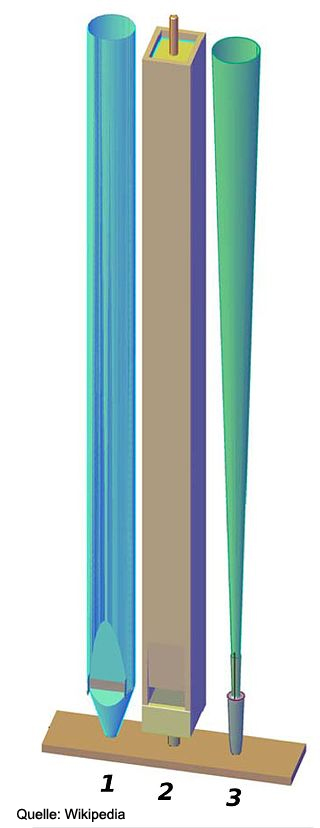The flute
The flute has a prescribed pipe diameter. The length of the pipe is changed through the different fingerings (pitch). There is an embouchure hole with an edge, on which the lip gap has to be placed exactly and as parallel as possible by the flutist („clean note“). The lip gap has to be adapted to the particular note by form and size and the direction of the air stream has to be adapted to the particular pitch (overblowing, acoustic color, dynamics, intonation).
The interior mouth is alterable – we can push our jaw back or forth, open and close it and are able to give a different form and diameter to the vocal tract by altering the different vowels through the position of the tongue (dynamics, intonation).
The air flows through the vocal tract and the lip gap in an amount and an intensity that we regulate through our respiratory musculature (support).
The recorder
How is all this when it comes to our relatives – the recorders? They have a prescribed diameter as well and change the pitch through the fingerings. The cutting edge faces a windway that's fixed in form and size - parallelly and perfectly straightened. Overblowing works by slightly opening the thumb hole (changing of the vibration behavior inside the pipe). The vocal tract is the part of the recorder you blow in – called windway. Its diameter and form are fixed by the instrument maker. The most flexible part that lasts are therefore the respiratory musculature and the possibilities to vary the air pressure and velocity in the interior mouth.
The organ
What the organ pipe has in common with the recorder, is a prescribed size and alignment of the vocal tract. However, the organ has a particular pipe diameter for every note! It influences the velocity- Every pipe has a „foot“ - it equals the vocal tract and is constructed in a different way in every pipe.
The organ has different registers and can produce various dynamics and acoustic colors with it. Every tone has a pipe on its own here. The organ has inflexible bellows, the flexibility comes from the diversity of the pipes.
Analogies with a garden hose
When we look at all this, the flutists have to handle most variables. And they have to coordinate them optimally to produce a perfect play. It holds a big challenge which requires a long and profound engagement with the instrument. However, things become easier when you understand the connections. That's where the garden hose can help us: Hoses are available in different diameters. If we send the same amount of water out of the same tap through different hoses with open ends, the water will have different velocities. Analogy interior mouth: jaw position,
Furthermore, hoses have nozzles which determine how fast and far they spray – tight nozzle: fast stream, open nozzle: slow stream. Analogy lip gap
Then we opened the tap more or less – there's a different amount and velocity of water. Analogy: respiratory musculature.
We can also lead the hose into a certain direction and direct the water closer to us or further away – with the help of our hands. Analogy: position of the jaw, lip movement/blowing angle
Examples for combinations with variables
In forte, low tones need a lot of slow air. A wider opening of the jaw, a darker pronunciation like „you“, a wider and higher lip gap – and the lips lead the air steeply into the flute. Notes in a central position need faster air, but not too much – or else they fall apart. If they don't get the fast air, they are too low in mf and p. Moving the jaw back and forth the lip gap is reduced through a movement of the lips, the lips come closer to the blowing edge and lead the air stream directly into the embouchure hole edge.
Or an example from the field of intonation:
An ff is played with a lot of air, which can't be too fast, though, or else the tone becomes too high. Therefore, the vocal tract and the lip gap have to be big and the blowing angle has to be steep. And vice versa, the pp shouldn't be too low: We need a little bit of very fast air, which means: Slim pipe, vowel „i“, small lip gap, flatter blowing angle.
Final words
Dear flutists:
All of the above shows us that our bodies have to permanently display the pipes of the organ in an elastic interplay – because the flute is only a pipe! That's why André Jolivet says analogously that the pipe is the most perfect instrument of all because it expresses what's going on in the human soul! You'll find more information about this topic in my booklet „fit for the flute – sound and intonation“ (UE 31292).
Good luck!




